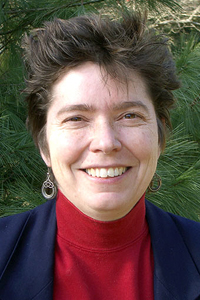Classical archaeologist to lecture on surveillance in ancient world
By Josh Schonwaldjschonwa@uchicago.edu
News Office
 Susan Alcock |
|
Hidden cameras, electronic records of consumer purchases, satellite images that can track movement with pinpoint precision. Surveillance is an accepted part of life, but the practice of closely observing and scrutinizing others is not unique to the modern, high-tech era—surveillance is more than 2,000 years old.
Renowned classical archaeologist Susan Alcock will show the pervasiveness of surveillance in the ancient world, and what it implies for the understanding of ancient cultures in early April when she delivers the Department of Art History’s Louise Smith Bross Lectures.
Alcock will give three lectures, drawing on historical and archaeological examples from the Mediterranean and the Near East, in the series titled “Some Archaeologies of Surveillance.”
She will present the first lecture, “Scanning and Planning: Modern Modes of Watching the Ancient World,” at 6:30 p.m. Thursday, April 1 in The Art Institute of Chicago’s Rubloff Auditorium, 111 S. Michigan Ave. The second lecture, also at The Art Institute, is titled “Spying and Crying: Ancient Modes of Watching the Ancient World.” It will be presented at 6 p.m. Thursday, April 2.
The series will conclude with “The Utility of Surveillance: Case Studies and Observations,” at 4:30 p.m. Wednesday, April 8 in the Cochrane-Woods Art Center, 5540 S. Greenwood Ave. Free and open to the public, the lectures will be published in book form by the University of Chicago Press.
A recipient of a 2000 MacArthur Foundation “genius grant,” Alcock is currently a professor of archaeology and classics at Brown University and director of Brown’s Joukowsky Institute for Archaeology and the Ancient World.
She has published extensively on archaeologies of landscape, imperialism and memory, especially in the Eastern half of the Roman Empire. She has conducted fieldwork in Greece and, most recently, in Armenia.
Endowed in memory of Louise Smith Bross (Ph.D.,’94), the Bross Lectures, which began in 2000 and are presented triennially, are emerging as one of the most prestigious in Art History. The University Press published the previous lecture series of Victor Stoichita, The Pygmalion Effect: From Ovid to Hitchcock, and Martin Kemp, The Human Animal in Western Art and Science.
A bus will depart from the Cochrane-Woods Art Center to take students to the Bross Lectures downtown. To reserve a space, please contact Carl Nash at csnash@uchicago.edu.
![[Chronicle]](/images/sidebar_header_oct06.gif)